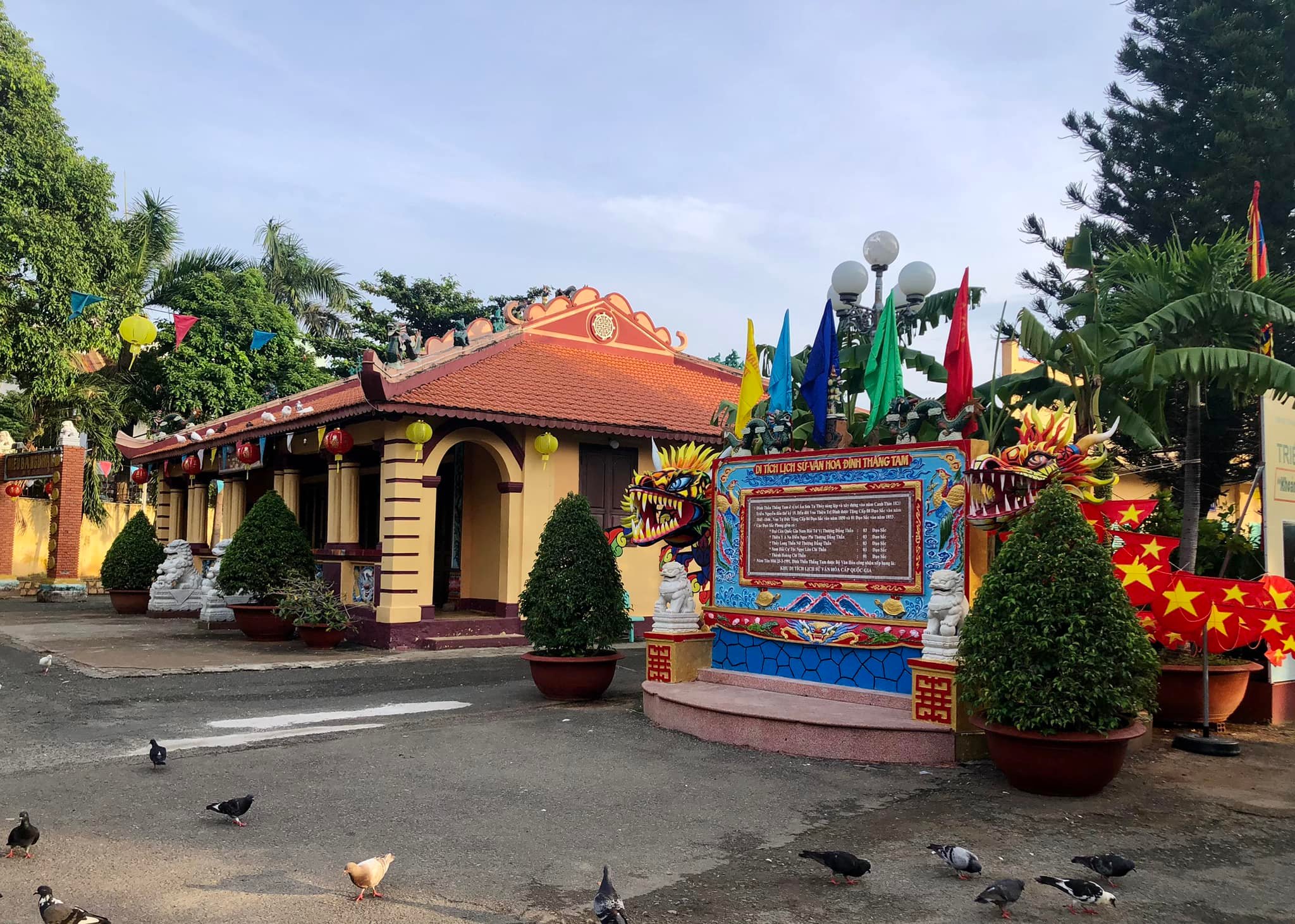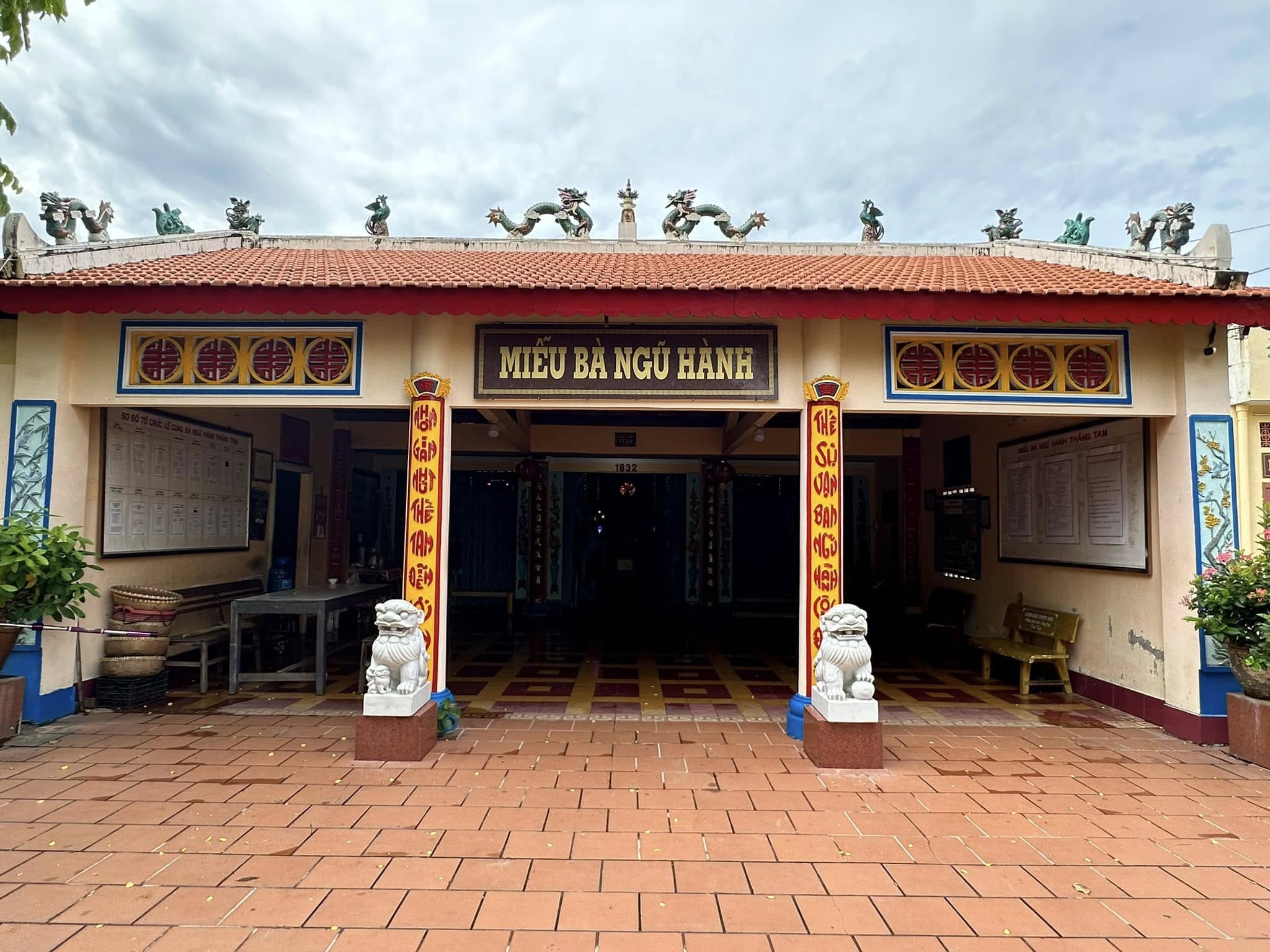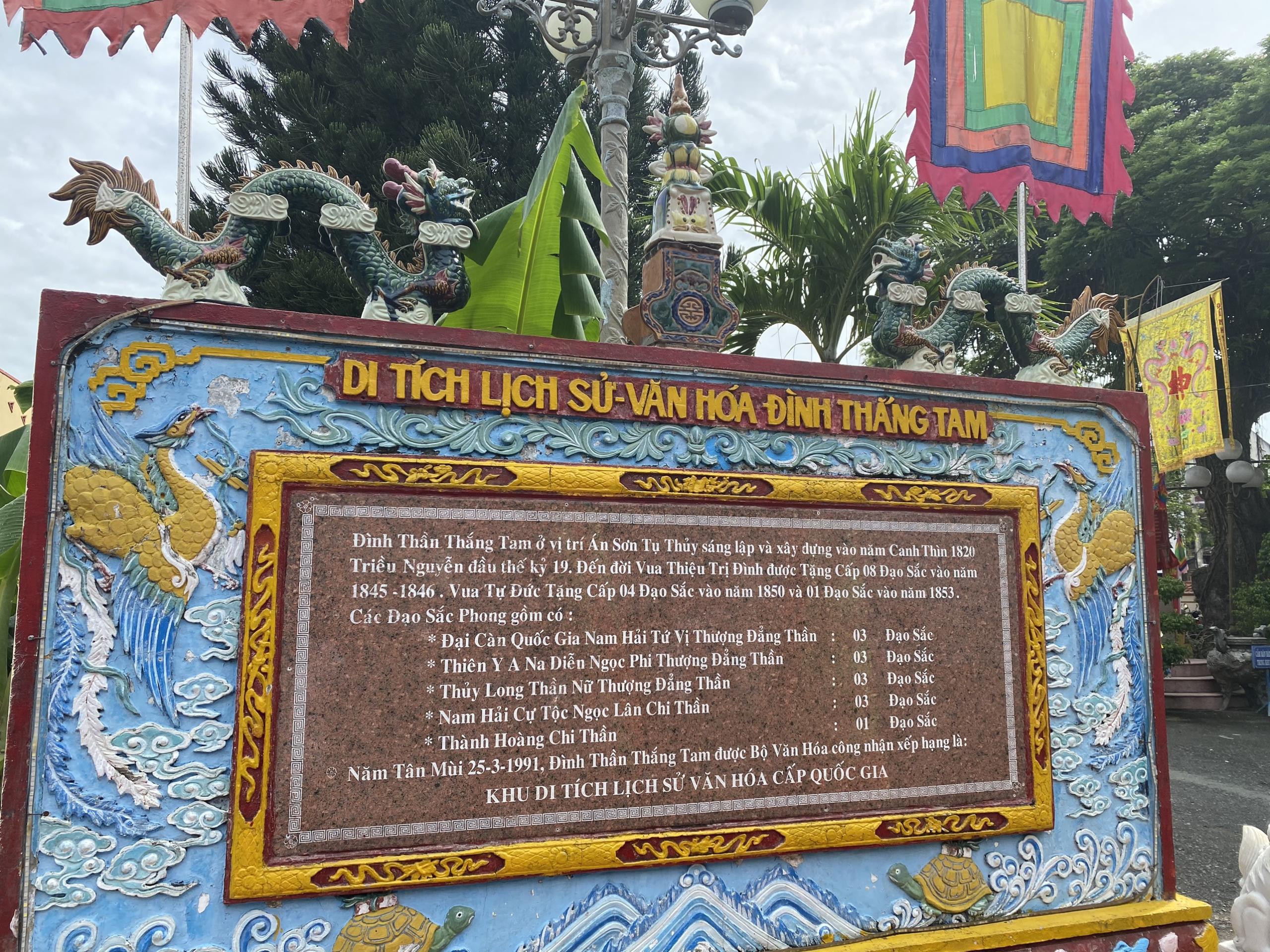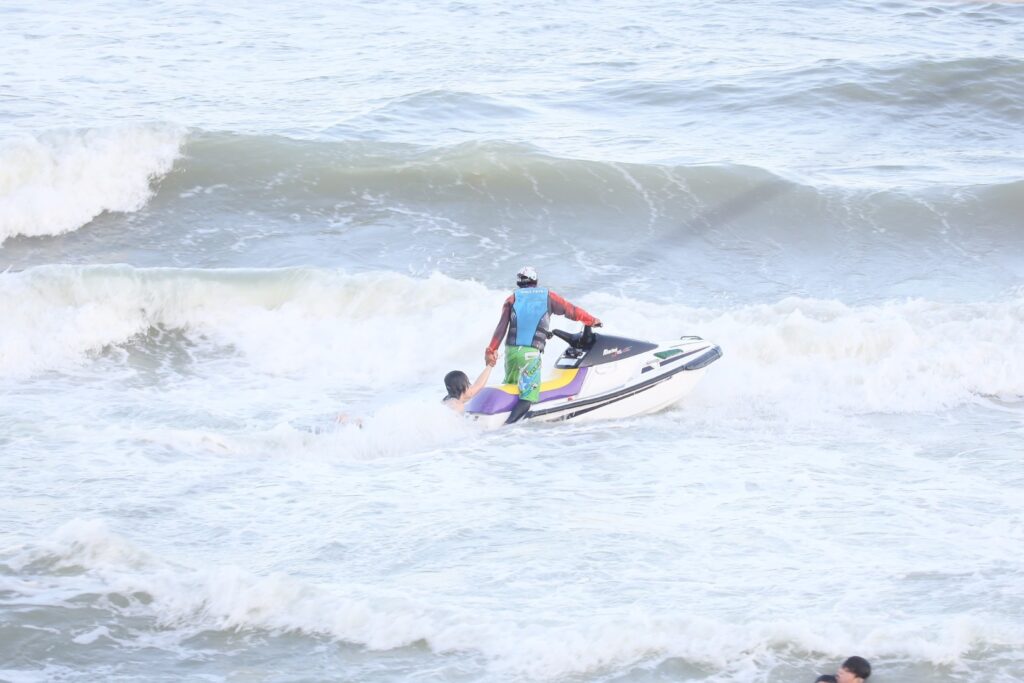Thang Tam Communal House is one of Vũng Tàu’s most unique spiritual and cultural attractions, drawing countless visitors who come to pay respects, pray for peace, and learn about local heritage. Located on Hoàng Hoa Thám Street, Thắng Tam Ward, Vũng Tàu City, the site forms a complex consisting of Thang Tam Communal House, the Five Elements Temple (Miếu Ngũ Hành), and the Whale Temple (Lăng Cá Ông).
Thang Tam Communal House
Originally built during the reign of Emperor Minh Mạng, the communal house was first constructed with bamboo and thatch. In 1835, local residents contributed to renovate it with a tiled roof, and in 1965, the communal house was fully restored into the sturdy structure seen today.
The communal house honors the three founders who established the early villages of Vũng Tàu: Phạm Văn Dinh, Lê Văn Lộc, and Ngô Văn Huyền.
During the reign of Emperor Gia Long, pirates frequently attacked trading boats entering Bến Nghé River. To protect merchant ships, the emperor deployed three military units on three boats to patrol the coast, safeguard maritime trade, and clear land for settlement.
Around the 3rd year of Minh Mạng’s reign (1822), piracy was eliminated. The emperor rewarded these units with titles, ranks, and the lands they had helped reclaim. From their stationed positions, three villages gradually formed:
- Thắng Nhất Village – led by Phạm Văn Dinh
- Thắng Nhì Village – led by Lê Văn Lộc
- Thắng Tam Village – led by Ngô Văn Huyền
The three officials later became revered village founders (Tiền Hiền) and are worshiped at the communal houses of each village.

Architecture
Thang Tam Communal House follows a traditional connected layout of four linked structures:
Tiền Hiền House – Assembly Hall – Main Communal House (Đình Trung) – Folk Opera Stage.
Inside are numerous intricately carved, gilded ceremonial objects. Tiền Hiền House is roofed with yin–yang tiles, featuring a raised relief of “Two Dragons Flanking the Moon.” Rafters, beams, and columns are adorned with dragon carvings.
Tiền Hiền House contains four altars:
- the Earth Deity,
- the Founders (Tiền Hiền),
- the Later Founders (Hậu Hiền),
- the Predecessors and Successors (Tiền Vãng – Hậu Vãng).
The Main Communal House features 10 altars including:
Thần Nông, Thiên Y A Na, Ngũ Đức, Thánh Phi, Hậu Hiền, Hội Đồng, Phụ Án – Cao Các, Thiên Sư, Ngũ Thơ, and Ngũ Tự – Tiền Hiền.
The Folk Opera Stage is used for hát bội (classical Vietnamese opera) during festivals.
Five Elements Temple (Miếu Bà Ngũ Hành)
Located to the left of the entrance, the Five Elements Temple was built in the late 19th century. It worships the five female deities representing Metal, Wood, Water, Fire, and Earth, as well as two highly venerated goddesses—Thiên Y A Na and Thủy Long Thần Nữ.
The temple follows a one-room, two-wing layout, with “Two Dragons Flanking the Moon” on its roof. Inside are eight altars:
- Central altar: the Five Element Goddesses + two High Deities
- Side altars: the Five Maiden Spirits (Ngũ Cô) and Five Young Lords (Ngũ Cậu)
- Left altar: Guan Yu, Guan Ping, and Zhou Cang—symbols of loyalty and protectors of seafarers
- Right altar: the Earth God (Ông Địa – Thổ Công)
- Rear altar: the Village Founders and virtuous elders

Whale Temple (Lăng Cá Ông)
Located to the right of the complex, the Whale Temple was built around the same period as the Five Elements Temple. It houses part of the skeleton of a giant whale that local fishermen recovered roughly 100 years ago. The temple retains its ancient architecture with a large glass display containing the whale bones and three main altars. Two side altars honor Lady Sáu (Turtle Goddess) and the traditional music ancestors.
Royal Decrees and Festivals
Thang Tam Communal House preserves 12 royal decrees from Emperors Thiệu Trị and Tự Đức, including:
- 6 decrees for Đại Càn Quốc Gia Nam Hải (the Whale God),
- 3 decrees for Thiên Y A Na,
- 3 decrees for Thủy Long Thần Nữ.
Annual Festivals
Three major festivals are held each year:
- Peace-Praying Ceremony (Lễ Cầu An): 17–20 of the 2nd lunar month
- Whale Worship Festival – Nghinh Ông: 16–18 of the 8th lunar month
- Five Elements Festival – Lễ Miếu Bà: 16–18 of the 10th lunar month
In recent years, these festivals have been expanded with cultural performances, sports activities, and artistic programs—enhancing community spirit, preserving cultural heritage, attracting tourists, and contributing to Vũng Tàu’s tourism development.








